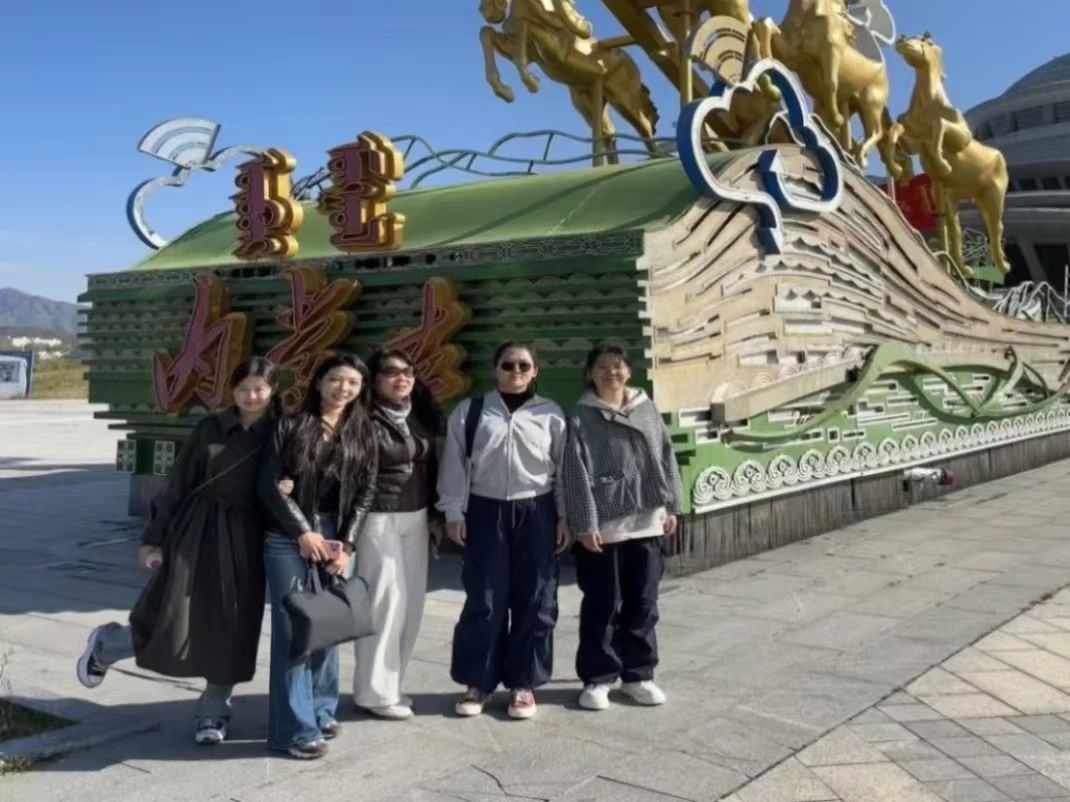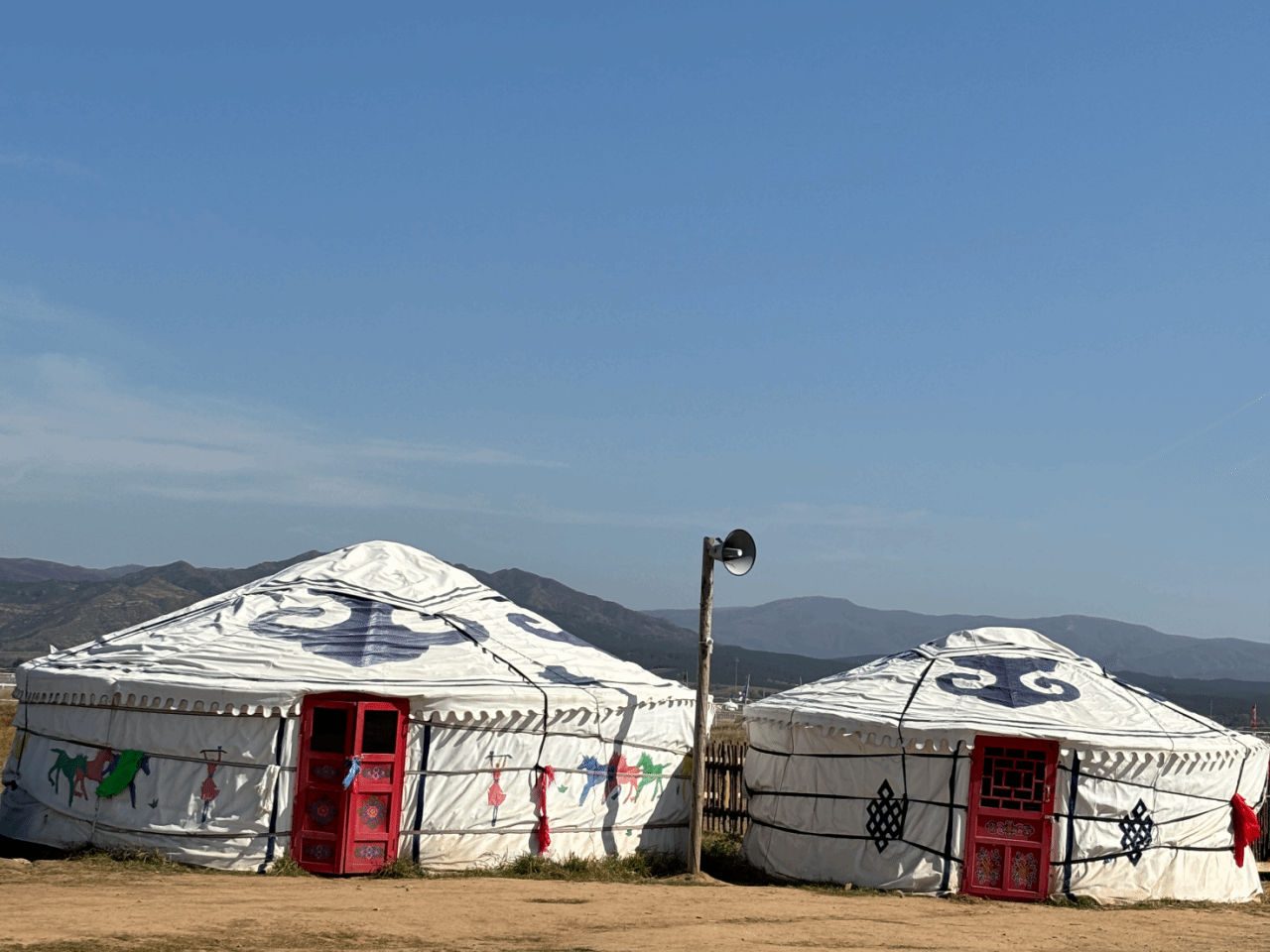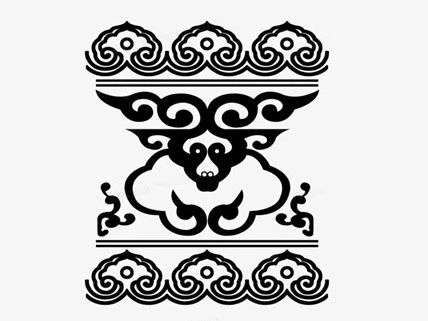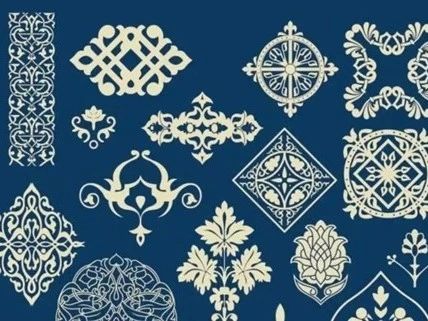2024年10月12日,在常云老师的带领下,24级全日制研究生踏上了一次充满文化与历史韵味的旅程,前往敕勒川草原,体验和学习蒙古族传统建筑——蒙古包的独特魅力。本次活动旨在通过实地考察,让学生深入了解蒙元时期的建筑文化,特别是蒙古包的构造以及蒙古族独特的装饰纹样,为未来做好蒙元文化外宣工作做一些准备。
当日,清晨的敕勒川草原沐浴在秋日的阳光中,老师和同学们怀着兴奋的心情抵达目的地。大家首先参观了蒙古包的外部结构,并了解到蒙古包是蒙古族传统的游牧居所,以其简约、坚固和便携著称。蒙古包的外部呈圆形,由木制框架搭建而成,再覆盖上防风防雨的毛毡,这种设计不仅适合草原上的气候条件,还易于拆装,便于迁徙。蒙古包的内部结构展现出精密的分区设计,中央一般设有炉灶,象征着家庭的核心,而周围则分为睡眠、储物和接待客人的区域。这种功能性的建筑形式反映了蒙古族游牧生活的智慧。(The Mongolian yurt is the traditional dwelling of the Inner Mongolian nomadic people, renowned for its simplicity, sturdiness, and portability. The exterior of the yurt is circular, constructed with a wooden frame and covered with felt that provides protection against wind and rain. This design is not only well-suited to the climatic conditions of the grasslands but also allows for easy assembly and disassembly, facilitating mobility. The interior of the yurt features a meticulously designed division of space, with a central stove, symbolizing the heart of the family, and surrounding areas designated for sleeping, storage, and hosting guests. This functional architectural form reflects the wisdom of the Inner Mongolian nomadic way of life.)
除了建筑结构,本次文化之旅还接触了解蒙古族的纹样装饰。蒙古族是一个历史悠久的民族,蒙古族图案艺术是草原民族在马背上历经千年的文化积淀形成的。蒙古族称“图案”一词为“贺乌嘎拉吉”,随着各种民间工艺制作的发展,人们把各种载体上的造型、色彩、纹饰统称为图案,主要分为两类:一为自然纹样,二为吉祥纹样。(The Mongolian pattern art is formed by the cultural accumulation of this grassland nation on horseback over thousands of years. The Mongolians call the word "pattern" "he ugalj". With the development of various folk crafts, people collectively refer to the shapes, colors and decorations on various carriers as patterns. It is mainly divided into two categories: one is natural patterns, and the other is auspicious patterns.)
自然纹样:
其中花草纹有梅花、杏花、牡丹、海棠、芍药等,动物纹有蝴蝶、蝙蝠、鹿、马、羊、牛、骆驼、狮子、老虎、大象等,另外还有山、水、火、云之类的图案。(Among natural patterns, flower and grass patterns include plum blossoms, apricot blossoms, peonies, crabapples, peonies, etc. Animal patterns include butterflies, bats, deer, horses, sheep, cattle, camels, lions, tigers, elephants, etc. There are also patterns such as mountains, water, fire, and clouds.)
吉祥纹样:
如福、禄、寿、喜、盘长、八结、龙、凤、法螺、佛手、宝莲等。图案内容丰富、色彩艳丽、对比强烈。蒙古族图案与纹样同其他民族的纹样关系密切,但在运用纹样时却显示出蒙古族特色。蒙古族喜欢组合运用图案纹样,如将盘长纹延伸再加入卷草的云头纹,缠绕不断,变化丰富多彩。技法多以几何形卷草纹为主,利用曲直线的变化,表现不同的感情,将直曲线条的不同形式相结合,达到和谐统一的画面布局。(Auspicious patterns include Fu, Lu, Shou, Xi, Panchang, Bajie, Dragon, Phoenix, Conch, Buddha's hand, Baolian, etc. The patterns are rich in content, colorful, and strong in contrast. Mongolian patterns are closely related to those of other ethnic groups, but they show Mongolian characteristics when using patterns. Mongolians like to combine patterns, such as the Yuntou pattern that extends Panchang pattern and adds Juancao pattern, which is constantly intertwined and colorful. The techniques are mostly based on geometric Juancao patterns, using the changes of straight and curved lines to express different emotions, combining different forms of straight and curved lines to achieve a harmonious and unified picture layout.)
蒙古族的民间图案运用范围十分广泛,生活中的每一个角落,几乎都有图案的存在,这深刻地反映出蒙古民族人民对生活的热爱,充分地体现了广大蒙古族人民的艺术创造力。(Mongolian folk patterns are widely used and can be found in almost every corner of life. This deeply reflects the Mongolian people's love for life and fully embodies the artistic creativity of the Mongolian people.)
本次文化之旅,不仅是一次学术探讨,更是一次心灵的旅程。学生们在敕勒川草原的风光中,不仅看见了草原建筑的壮美,更体会到了草原文化的深邃。





